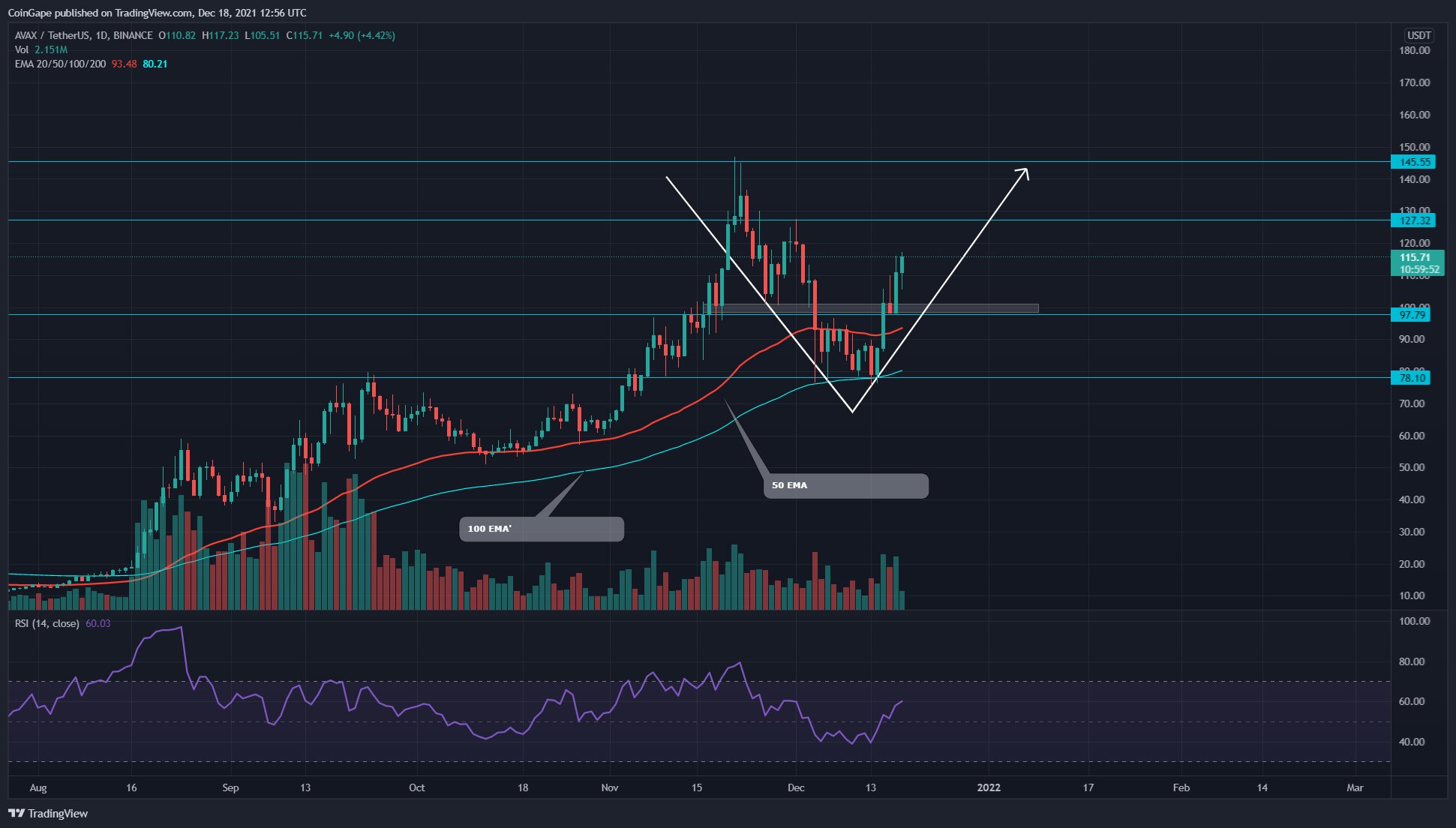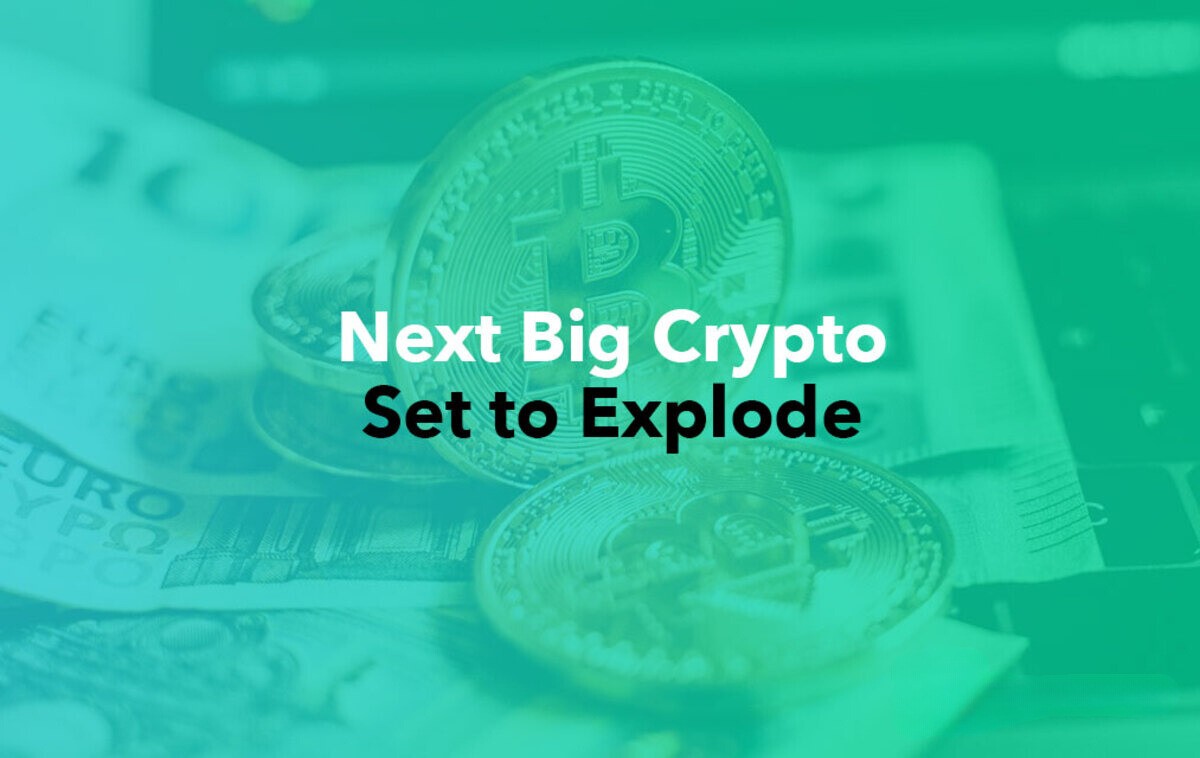Introduction
Welcome to the world of Avalanche Crypto, a cutting-edge blockchain platform that is revolutionizing the decentralized finance (DeFi) space. With its innovative approach to consensus and scalability, Avalanche has garnered significant attention and is quickly gaining popularity in the cryptocurrency community.
Avalanche Crypto takes a unique approach to blockchain technology, promising lightning-fast transaction speeds, low fees, and a high level of security. It aims to address the long-standing challenges of scalability and decentralization that have plagued previous blockchain networks, making it an attractive choice for developers, businesses, and users alike.
Launched in 2020, Avalanche has gained momentum within a relatively short period. Its robust infrastructure and developer-friendly environment have attracted a growing number of projects and investors. In this article, we will dive into the fascinating world of Avalanche, exploring its key features, consensus protocol, governance model, and more.
Whether you are a seasoned crypto enthusiast or someone new to the blockchain space, this article will serve as a comprehensive guide to understanding Avalanche Crypto and its potential impact on the future of finance.
What is Avalanche Crypto?
Avalanche Crypto is a decentralized blockchain platform that aims to provide high scalability, fast transaction speeds, and low fees. It is designed to overcome the limitations of previous blockchain networks and offer a robust infrastructure for building decentralized applications (dApps) and financial services.
At its core, Avalanche utilizes a unique consensus protocol called Avalanche consensus. This consensus mechanism allows for multiple virtual machines to operate in parallel, enabling high throughput and near-instant finality of transactions. By utilizing a novel approach to consensus, Avalanche ensures the security and decentralization of the network.
Unlike traditional proof-of-work (PoW) or proof-of-stake (PoS) mechanisms, Avalanche uses a system of validators that vote on the validity of transactions. This process, known as Avalanche consensus, allows for quick consensus decisions and ensures the integrity of the network. Validators are incentivized to act honestly through a system of rewards and penalties, further enhancing the security of the blockchain.
Avalanche Crypto also offers a range of features that make it an attractive choice for developers and businesses. These include a high-performance virtual machine called the Avalanche Virtual Machine (AVM), which supports Ethereum-compatible smart contracts, and a comprehensive toolkit for building dApps.
With its focus on scalability and efficiency, Avalanche Crypto has gained attention for its ability to handle a large number of transactions in a short period. Its low transaction fees and fast confirmation times make it ideal for a wide range of applications, including decentralized finance (DeFi), gaming, supply chain, and more.
Overall, Avalanche Crypto stands out as a blockchain platform that combines high scalability, low fees, and fast transaction speeds without compromising on security or decentralization. Its innovative approach to consensus, extensive developer tools, and growing ecosystem make it an exciting option for those looking to leverage the power of blockchain technology.
How Does Avalanche Work?
Avalanche operates on a unique consensus protocol known as Avalanche consensus, which allows for fast, secure, and efficient transactions on the network. In Avalanche, transactions are validated and added to the blockchain through a process called staking.
At its core, Avalanche uses a directed acyclic graph (DAG) structure known as the Avalanche Subnet, which acts as the backbone of the network. The Avalanche Subnet is responsible for maintaining the consensus agreement among validators and ensures the finality of transactions.
When a transaction is initiated on the Avalanche network, it is broadcasted to a set of validators. These validators then vote on the validity of the transaction. In Avalanche, validators are chosen dynamically based on their reputation, stake, and voting history.
During the voting process, validators repeatedly exchange messages to reach a consensus on the validity of the transaction. This process is called repeated binary Byzantine consensus. Through this iterative process, the network determines the final decision on whether the transaction is valid or invalid.
Once a transaction receives enough votes to be considered valid, it is added to a block and confirmed by the network. This confirmation process ensures the finality and security of the transaction. The blocks are then added to the Avalanche Subnet, forming a chain of validated transactions.
Avalanche also incorporates a mechanism known as Avalanche random sampling (ARS) to select validators for voting. This mechanism ensures that the voting process remains secure and unbiased by selecting validators randomly from a large pool of participants.
Furthermore, Avalanche introduces a concept called metastability in its consensus protocol. This means that the network can withstand conflicting opinions during the voting process without getting stuck or forking. Through this innovative approach, Avalanche ensures a high level of consensus and reliability in its network.
Overall, Avalanche’s consensus protocol and the use of DAG structure provide a highly efficient and scalable solution for transaction validation. By leveraging dynamic validator selection, repeated binary Byzantine consensus, and metastability, Avalanche is able to achieve fast transaction speeds, low fees, and a high level of security.
Key Features of Avalanche
Avalanche Crypto offers a range of innovative features that set it apart from traditional blockchain platforms. Let’s explore some of the key features that make Avalanche unique:
- High Scalability: One of the standout features of Avalanche is its ability to handle a high volume of transactions in a short period. By utilizing a multi-chain architecture, Avalanche can process thousands of transactions per second, making it ideal for applications that require high throughput.
- Fast Transaction Speeds: Avalanche is designed to achieve near-instant transaction finality. With its consensus protocol, transactions can be confirmed within seconds, allowing for a seamless user experience and enabling real-time applications.
- Low Fees: Avalanche offers low transaction fees compared to many other blockchain platforms. The efficient consensus mechanism and high throughput capabilities allow for cost-effective transactions, making it attractive for users and businesses alike.
- Interoperability: Avalanche is compatible with the Ethereum Virtual Machine (EVM), which means developers can easily migrate their existing Ethereum-based applications to Avalanche. This interoperability provides flexibility and convenience for developers, allowing them to tap into the growing Avalanche ecosystem.
- Robust Security: Avalanche prioritizes the security of its network and employs a unique consensus mechanism that ensures the integrity of transactions. Through repeated binary Byzantine consensus and the use of reputation-based validator selection, Avalanche provides a high level of security against potential attacks.
- Decentralized Governance: Avalanche incorporates a decentralized governance model, allowing AVAX token holders to participate in decision-making processes. This ensures that the community has a voice in shaping the future of the platform, fostering transparency and inclusiveness.
- Developer-Friendly Environment: Avalanche provides a comprehensive set of development tools and libraries, making it easy for developers to build decentralized applications (dApps) and smart contracts. The Avalanche Virtual Machine (AVM) supports Ethereum-compatible smart contracts, offering developers a familiar environment to create and deploy their applications.
These features collectively make Avalanche a powerful blockchain platform that offers scalability, speed, security, low fees, and interoperability. With its focus on user experience and developer-friendliness, Avalanche is well-positioned to drive the adoption of blockchain technology across various industries.
The Avalanche Token (AVAX)
The Avalanche network has its native cryptocurrency called AVAX, which serves as the utility token for the platform. AVAX plays a vital role in the Avalanche ecosystem, facilitating various operations and incentivizing participation in the network.
As a cryptocurrency, AVAX can be used for transactions, including sending and receiving funds on the Avalanche network. It also serves as the primary means of payment for fees associated with executing smart contracts, staking, and participating in governance activities.
AVAX token holders have the opportunity to participate in the network’s consensus protocol through staking. By locking up their AVAX tokens as collateral, users can become validators and contribute to securing the Avalanche network. Validators are responsible for validating transactions, maintaining consensus, and securing the blockchain, and they are rewarded with additional AVAX tokens for their role.
In addition, AVAX holders have governance rights within the Avalanche ecosystem. The decentralized governance model allows token holders to propose and vote on network upgrades, parameter changes, and other important decisions. This ensures that the community has a say in the evolution of the platform and promotes democratic decision-making.
AVAX tokens can be acquired through various means, including purchasing them on cryptocurrency exchanges or participating in token sales and initial coin offerings (ICOs). The tokens can then be stored in a compatible Avalanche wallet, where users have full control over their funds.
One notable aspect of AVAX is its deflationary nature. As transactions occur on the Avalanche network, a portion of the transaction fees is burned, reducing the overall supply of AVAX over time. This deflationary mechanism is designed to create scarcity and potentially increase the value of the token.
Overall, the AVAX token is an essential component of the Avalanche ecosystem. It enables participation in network consensus, governance, and serves as a medium of exchange for transactions and fees. With its utility and deflationary nature, AVAX plays a crucial role in the growth and sustainability of the Avalanche network.
Avalanche Consensus Protocol
The Avalanche consensus protocol is at the heart of the Avalanche blockchain network. It is a groundbreaking consensus mechanism that combines elements of both proof-of-stake (PoS) and classical consensus algorithms to achieve fast, secure, and decentralized transaction validation.
Unlike traditional consensus algorithms that rely on miners or a fixed set of validators, Avalanche utilizes a system of validators that dynamically participate in the network. Validators are chosen based on their reputation, stake, and voting history within the ecosystem.
The consensus process in Avalanche begins when a transaction is proposed to the network. The validators then vote on the validity of the transaction by exchanging messages in a repeated binary Byzantine consensus. This voting process occurs in multiple rounds until consensus is reached.
During each round, validators repeatedly interact and communicate with each other to determine the validity of the transaction. They do this by sampling a subset of other validators and asking them to vote on the transaction. This process continues until a supermajority of validators agree on the decision.
One key feature of the Avalanche consensus protocol is its ability to handle conflicting opinions without causing forks or delays. This is achieved through a concept called metastability, where the protocol allows for multiple conflicting opinions to coexist temporarily until one opinion gains a significant majority.
By using repeated binary Byzantine consensus and metastability, Avalanche ensures that the consensus process is fast, efficient, and resilient to attacks. The protocol can reach agreement on transactions in just a few seconds, enabling near-instant finality and high throughput.
Furthermore, Avalanche consensus enables a high level of security by leveraging validator reputation and stake-based incentives. Validators are economically incentivized to act honestly and follow the protocol rules. In case of misbehavior, validators can be penalized by losing a portion of their stake or being temporarily disabled from participating in consensus.
The Avalanche consensus protocol’s unique design enables the network to achieve a high degree of decentralization, scalability, and security. It addresses the limitations of traditional consensus algorithms while paving the way for the development of scalable and efficient blockchain applications.
Avalanche Subnet
In the Avalanche network, the Avalanche Subnet serves as a key component that enables the functioning of the system. It is a directed acyclic graph (DAG) structure that acts as the underlying framework for the consensus and transaction validation process.
The Avalanche Subnet consists of a series of connected blocks called vertices. Each vertex represents a transaction or an update to the state of the blockchain. The vertices are linked to each other in a specific order, creating a chain of validated transactions.
The Avalanche Subnet allows for parallel processing and validation of transactions, making the network highly scalable. Unlike traditional blockchains where transactions are processed one by one in sequential order, the Avalanche Subnet allows multiple transactions to be validated simultaneously, significantly increasing the throughput of the network.
The validation process within the Avalanche Subnet is conducted by an active set of validators. These validators participate in the consensus protocol and collectively determine the validity of transactions. They propose and vote on the inclusion of new vertices into the Subnet, ensuring the integrity and finality of the transactions.
One of the benefits of the Avalanche Subnet is its ability to handle conflicting transactions. In cases where multiple valid transactions conflict with each other, the Subnet can accommodate multiple branches, allowing for the coexistence of different opinions temporarily. This feature, known as the Avalanche property, ensures that the network can reach a consensus without causing forks or delays.
Furthermore, the Avalanche Subnet supports cross-chain communication and interoperability. It enables the connection and exchange of assets and data between different chains within the Avalanche ecosystem. This interoperability opens up a wide range of possibilities for decentralized applications (dApps) and allows for seamless integration with other blockchain networks.
The Avalanche Subnet plays a crucial role in maintaining the blockchain’s consensus and enabling fast and scalable transaction validation. Its parallel processing capabilities, ability to handle conflicts, and support for interoperability make it a powerful infrastructure for building decentralized applications and facilitating efficient transactions within the Avalanche network.
Avalanche Governance
Avalanche prides itself on being a decentralized platform, and a key aspect of maintaining decentralization is through its governance model. Avalanche governance gives token holders the power to participate in decision-making processes and shape the future of the network.
The governance process in Avalanche is driven by the AVAX token holders. AVAX token holders have the ability to propose and vote on changes to the protocol, upgrades, parameter adjustments, and other important decisions that affect the ecosystem. This ensures that the community has a say in the evolution of the platform.
Proposals for governance are submitted through a voting system, where token holders can express their support or opposition. These proposals can range from technical upgrades and improvements to changes in governance policies or network parameters. The voting process is transparent and open to all token holders, promoting inclusivity and transparency in decision-making.
To participate in governance, AVAX token holders can delegate their voting power to a representative, known as a validator, or they can actively vote on proposals themselves. Validators are players in the network who have a higher stake and reputation and are trusted by the community to act in the best interest of the network.
In addition to voting power, validators play a crucial role in maintaining the security and integrity of the network. They are responsible for validating transactions, securing the blockchain, and participating in consensus. Validators are economically incentivized to act honestly and follow the protocol rules, as their reputation and rewards are at stake.
The decentralized governance model in Avalanche ensures that decision-making power is distributed among the token holders rather than being concentrated in the hands of a few entities. This helps to avoid centralization, promotes fairness, and fosters community-driven growth and development.
Avalanche’s governance model reflects its commitment to maintaining a network that is driven by the community, and one that can adapt and evolve over time. By empowering token holders with governance rights, Avalanche ensures that the platform remains decentralized, resilient, and able to respond to the evolving needs and challenges of the blockchain ecosystem.
Use Cases for Avalanche
Avalanche Crypto’s high scalability, fast transaction speeds, and low fees make it an attractive blockchain platform for a wide range of use cases. Let’s explore some of the potential applications of Avalanche:
- Decentralized Finance (DeFi): Avalanche has the potential to revolutionize the DeFi space by providing a scalable and efficient infrastructure for decentralized applications. It enables the creation and execution of complex financial products, such as lending and borrowing platforms, decentralized exchanges, and stablecoins.
- Gaming: Avalanche’s high transaction throughput and near-instant finality make it ideal for gaming applications. From in-game asset ownership and trading to provably fair gaming and virtual economies, Avalanche can provide a seamless and secure environment for gaming enthusiasts.
- Supply Chain Management: Avalanche’s transparency, security, and interoperability make it suitable for supply chain management applications. It can offer immutable records of product provenance, tracking, and authentication, enhancing transparency and reducing fraud in supply chain logistics.
- Digital Identity: Avalanche can be utilized for digital identity solutions, where each individual has control over their personal information. By leveraging the blockchain’s immutability and security, Avalanche can provide a trusted and decentralized framework for identity verification, reducing fraud and enhancing privacy.
- Tokenization of Assets: Avalanche allows for the tokenization of real-world assets, such as real estate, art, or intellectual property rights. This enables fractional ownership, increased liquidity, and easier transferability of assets, opening up new investment opportunities for individuals and institutions.
- Data Management: Avalanche’s capabilities in handling high transaction volumes and ensuring data integrity make it suitable for data management applications. It can be utilized for secure and efficient data storage, data sharing, and data exchange platforms.
- Governance and Voting: The decentralized governance model of Avalanche can be leveraged for conducting secure and transparent voting and governance processes. By utilizing the strength and security of the network, Avalanche can facilitate fair and trustworthy elections, decision-making processes, and community-driven initiatives.
These are just a few examples of the wide range of applications that can be built on the Avalanche platform. With its high scalability, fast transaction speeds, low fees, and robust security, Avalanche provides a solid foundation for various industries to leverage the power of blockchain technology.
Benefits and Advantages of Avalanche
Avalanche Crypto offers several benefits and advantages that set it apart from other blockchain platforms. Let’s explore some of the key advantages of Avalanche:
- Scalability: Avalanche provides high scalability by utilizing a multi-chain architecture and parallel processing. It can handle a large number of transactions per second, making it suitable for applications that require high throughput.
- Fast Transaction Speeds: Transactions on the Avalanche network are confirmed within seconds, ensuring near-instant finality. This enables real-time applications and enhances the user experience by reducing transaction settlement times.
- Low Fees: Avalanche offers low transaction fees compared to many other blockchain platforms. The efficient consensus mechanism and high throughput capabilities allow for cost-effective transactions, making it attractive for users and businesses.
- Secure and Robust Consensus: Avalanche’s consensus protocol provides a high level of security, ensuring the integrity and finality of transactions. The use of repeated binary Byzantine consensus and validator reputation-based incentives enhances the overall security of the network.
- Interoperability: Avalanche is compatible with the Ethereum Virtual Machine (EVM), allowing for seamless integration with existing Ethereum-based applications. This interoperability makes it convenient for developers to leverage the existing Ethereum ecosystem and expand their reach on the Avalanche network.
- Developer-Friendly Environment: Avalanche provides a comprehensive set of development tools and libraries that make it easy for developers to build decentralized applications (dApps) and smart contracts. The Avalanche Virtual Machine (AVM) supports Ethereum-compatible smart contracts, offering developers a familiar environment for building and deploying applications.
- Decentralized Governance: The decentralized governance model of Avalanche allows token holders to participate in decision-making processes and shape the future of the platform. This fosters transparency, inclusivity, and ensures that the network evolves in a manner that reflects the collective interest of the community.
- Deflationary Token Model: AVAX, the native token of Avalanche, utilizes a deflationary model where a portion of transaction fees is burned. This reduces the supply of AVAX over time, potentially increasing its value and creating a scarcity effect.
These advantages collectively position Avalanche as a powerful blockchain platform that offers scalability, fast transaction speeds, low fees, security, interoperability, and a developer-friendly environment. With its decentralized governance model and deflationary token model, Avalanche provides a solid foundation for innovation, growth, and the widespread adoption of blockchain technology.
Avalanche vs Other Blockchain Platforms
Avalanche Crypto distinguishes itself from other blockchain platforms through its unique features and technical capabilities. Let’s compare Avalanche to some of the well-known blockchain platforms:
- Avalanche vs Ethereum: Avalanche offers compatibility with Ethereum, allowing developers to seamlessly migrate their Ethereum-based applications to Avalanche. However, Avalanche stands out with its higher scalability, faster transaction speeds, and lower fees compared to Ethereum. Additionally, Avalanche’s consensus protocol provides the ability to handle conflicts without forks, ensuring efficient and secure transaction validation.
- Avalanche vs Bitcoin: While Bitcoin is the pioneer of blockchain technology, Avalanche offers significant advantages in terms of scalability and transaction speeds. Avalanche’s consensus protocol enables a high throughput of transactions and ensures near-instant finality, making it more suitable for real-world use cases that require fast and efficient transactions.
- Avalanche vs Binance Smart Chain (BSC): Binance Smart Chain is known for its low fees and fast transaction speeds, similar to Avalanche. However, Avalanche provides higher scalability and a more robust consensus protocol. The Avalanche network can handle a larger number of transactions per second, making it a favorable choice for decentralized applications that require high throughput.
- Avalanche vs Cardano: Both Avalanche and Cardano aim to address scalability and security issues in blockchain technology. However, Avalanche sets itself apart with its faster transaction speeds and low fees. Avalanche’s consensus protocol allows for near-instant finality, while Cardano’s proof-of-stake protocol has longer block confirmation times. Additionally, Avalanche’s compatibility with Ethereum’s smart contracts offers seamless integration with the existing Ethereum ecosystem.
- Avalanche vs Polkadot: Polkadot focuses on interoperability between different blockchains and provides shared security. In comparison, Avalanche offers high scalability, fast transaction speeds, and low fees. Avalanche achieves high throughput through its consensus protocol and multi-chain architecture, while Polkadot is more focused on enabling communication between heterogeneous blockchains.
In summary, Avalanche distinguishes itself from other blockchain platforms with its high scalability, fast transaction speeds, low fees, and innovative consensus protocol. It combines the compatibility of Ethereum, the speed of transaction processing, and the security of its unique consensus mechanism. Avalanche presents itself as a powerful option for developers, businesses, and users seeking a blockchain platform that can handle a high volume of transactions, offer near-instant finality, and provide a developer-friendly environment.
Conclusion
Avalanche Crypto is a groundbreaking blockchain platform that offers high scalability, fast transaction speeds, and low fees. With its innovative consensus protocol, Avalanche is able to address the challenges of scalability and decentralization that have plagued other blockchain networks.
By leveraging a unique combination of elements from proof-of-stake (PoS) and classic consensus algorithms, Avalanche provides near-instant transaction finality and high throughput, making it suitable for a wide range of applications.
With its compatibility with the Ethereum Virtual Machine (EVM), developers can easily migrate their existing Ethereum-based applications to Avalanche, tapping into its enhanced capabilities while maintaining familiarity.
Avalanche’s decentralized governance model ensures that the community has a say in the platform’s evolution. Token holders have the power to propose and vote on changes, upgrades, and important decisions, fostering inclusivity, transparency, and adaptability.
Overall, Avalanche stands out as a powerful and promising blockchain platform with several advantages over traditional platforms. Its scalability, fast transaction speeds, low fees, robust security, interoperability, and developer-friendly environment make it an attractive choice for individuals, businesses, and developers seeking to leverage the full potential of blockchain technology.
As Avalanche continues to grow and evolve, it has the potential to disrupt multiple industries, including decentralized finance (DeFi), gaming, supply chain management, digital identity, and more. With its focus on innovation, user experience, and community-driven governance, Avalanche is poised to play a significant role in shaping the future of decentralized technologies.

























